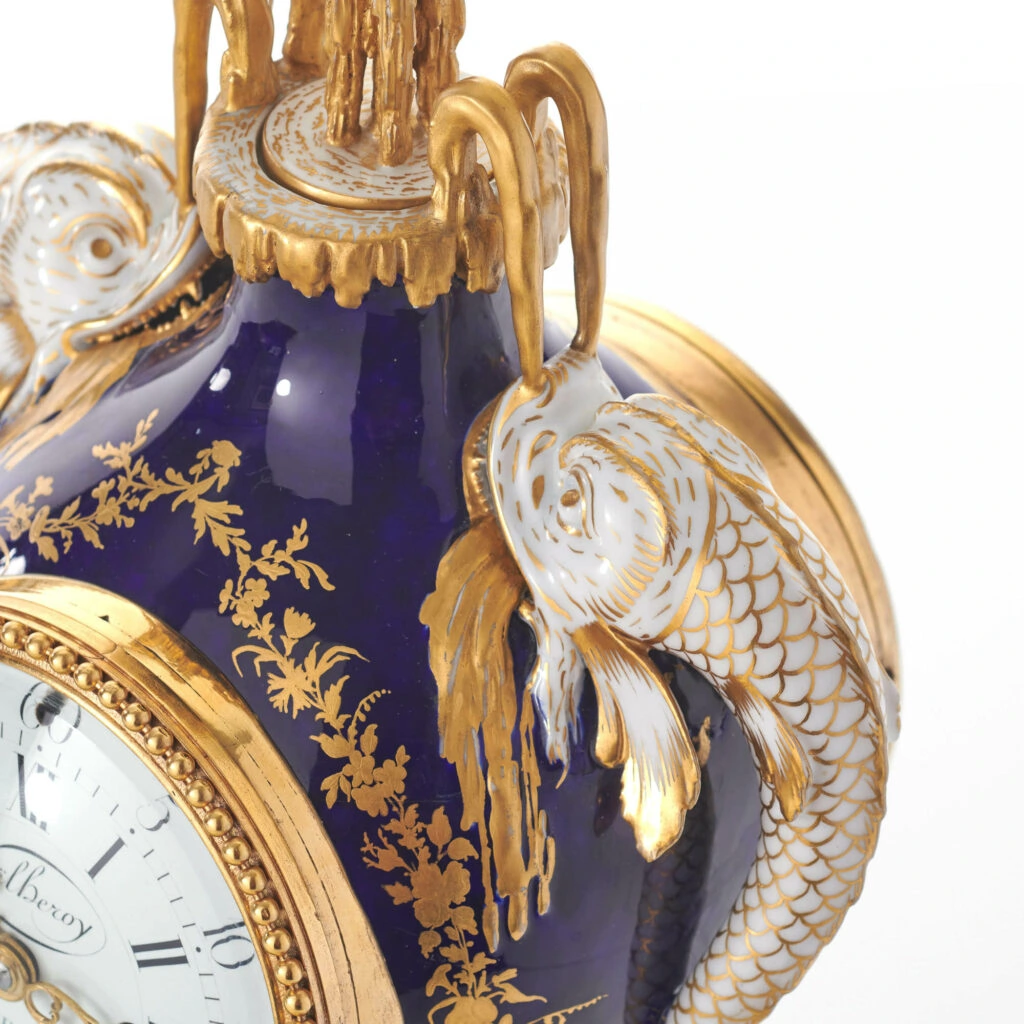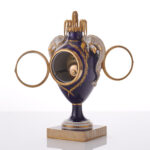
More about A Soft-Paste Sèvres Porcelain Clock Vase, circa 1778-80
There is now an example of this model purchased by the Musée National du Château de Versailles in 2013. It has a very fine dial and movement by the clockmaker Roque. It has the date letter x for 1775 and it seems likely that it is the one purchased by Louis XVI. The Versailles example has its own square gilt-bronze base below the socle whereas ours has a porcelain base integral to the socle and the lack of that base section is often a sign of the first production of a model which later was made more stable with the base found on ours. The gilding of this piece is less elaborate than on the present example.The dial of our clock bears the name of the the clockmaker “Noel Heroy à Paris". In Tardy’s Dictionnaire des Horlogers Français (1972) lists Noël-Alexandre Heroy, born 1747, maître in 1778, rue Saint-Nicaise in 1781 and rue du Temple in 1783. Pierre Verlet in Les Bronzes dorés Français du XVIIIe siècle, states that Heroy was maître either in 1778 or in 1788. This indicates that our clock is from 1778 to 1780.
An example in the Sèvres Museum [Inv. MNCS 21867] is most similar the present example with the elabroate gilding on the body of the vase, considerably more elaborate gilding than on the Versailles clock. The picture below shows it once photographed at Versailles, in Louis XVI’s Cabinet de Garde-Robe.
Another example but with much plainer gilding on the body of the vase, with a dial by the clockmaker Germain Dubois was in the Hector Binney collection and was last sold at Christie’s in 2016. It has no decorative gilding around the dial but does have the square porcelain base.












